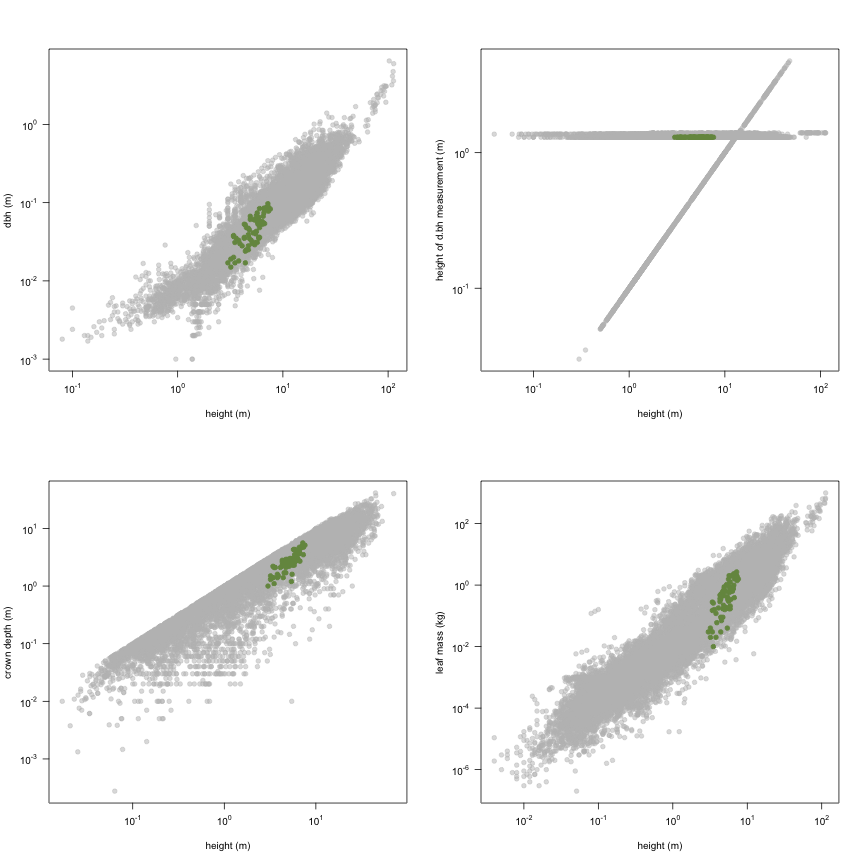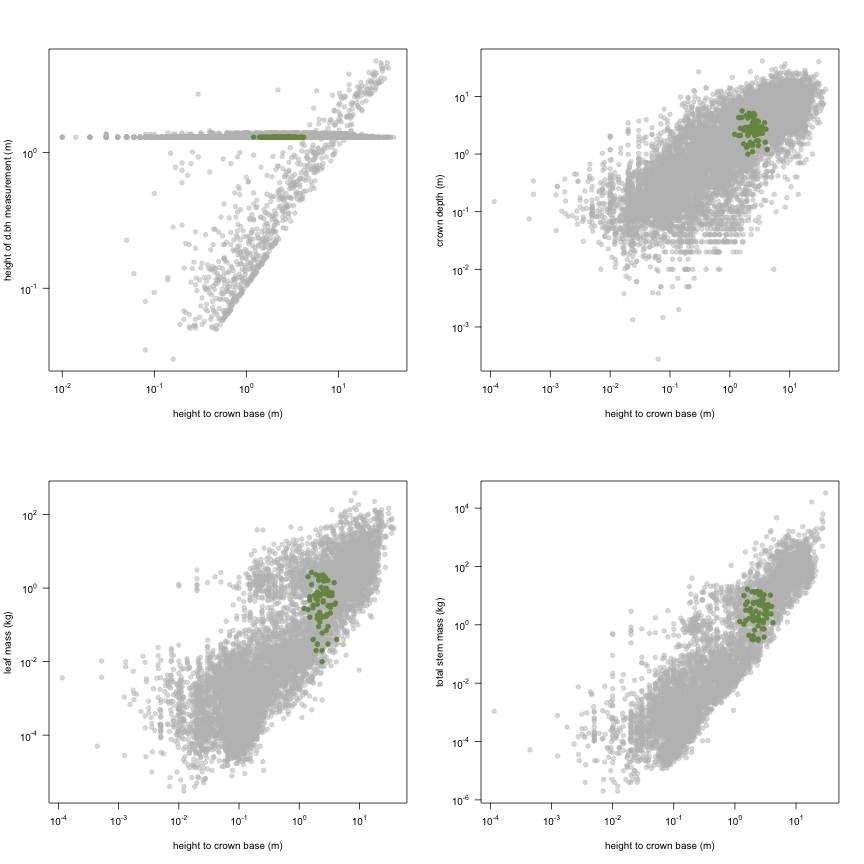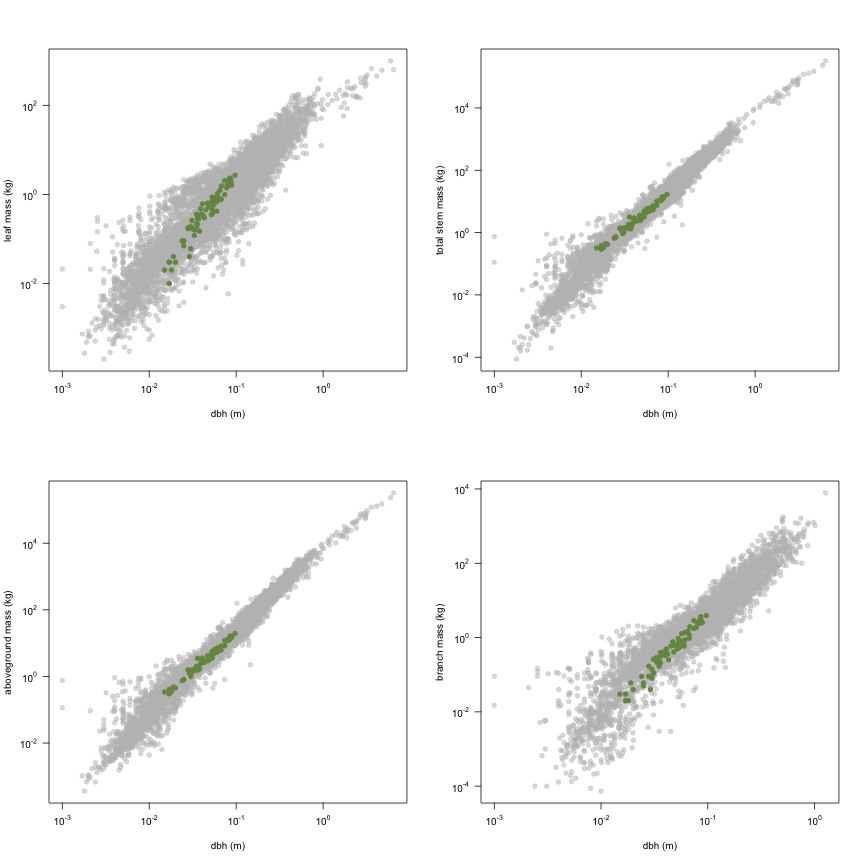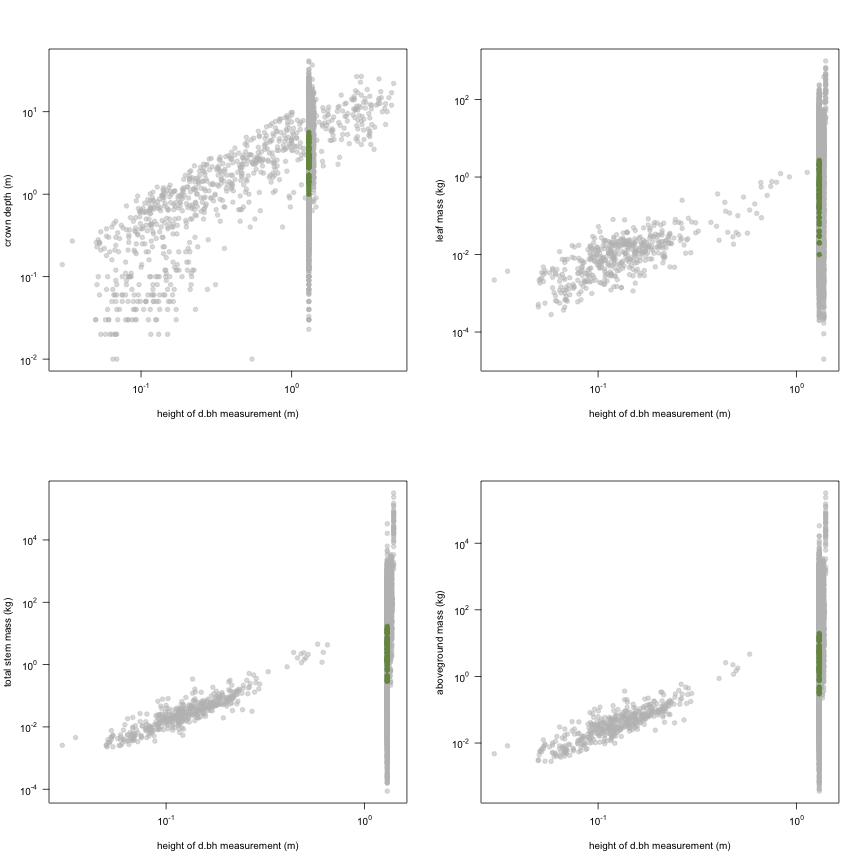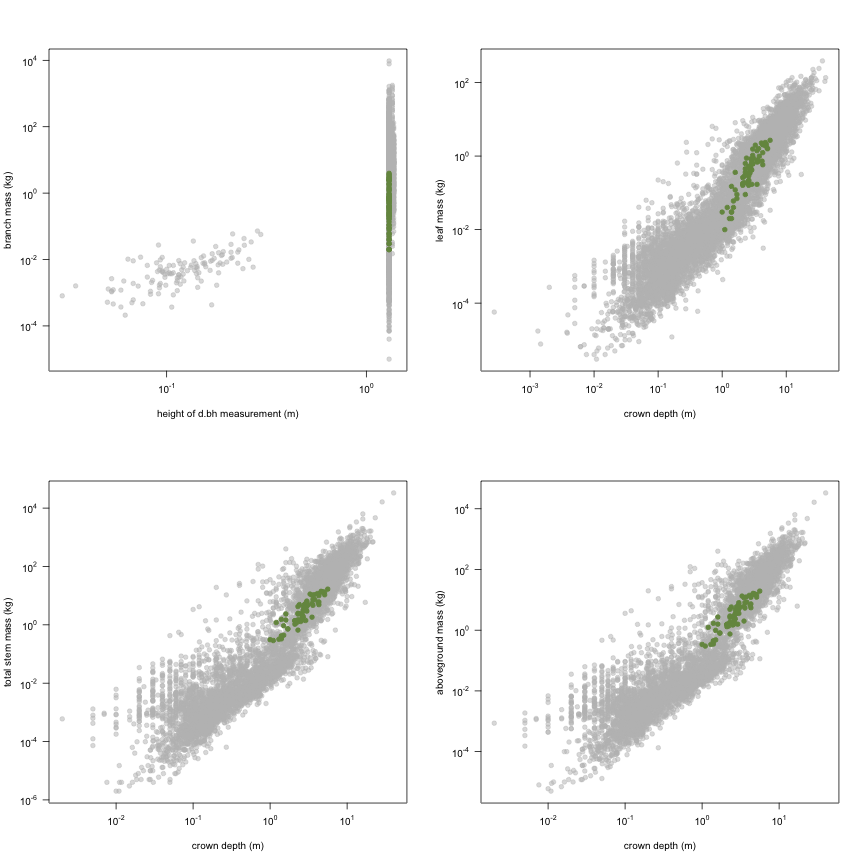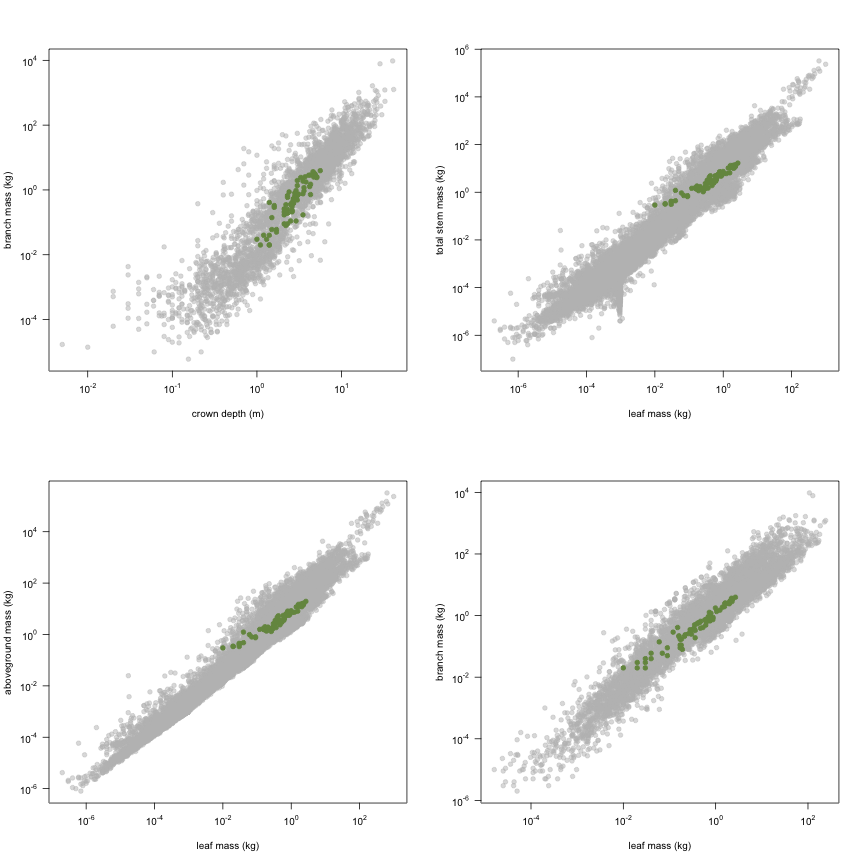-
Notifications
You must be signed in to change notification settings - Fork 19
Ando1962
Data contributor: Masae I. Ishihara, Hajime Utsugi, Hiroyuki Tanouchi, Tsutom Hiura
Email: [email protected]
Address:
- Graduate School for International Development and Cooperation, Hiroshima University, 1-5-1 Kagamiyama, Higashi-Hiroshima 739-8529, Japan
- Forestry and Forest Products Research Institute (FFPRI), 1 Matsunosato, Tsukuba, Ibaraki, 305-8687, Japan
- Hokkaido Research Center, Forestry and Forest Products Research Institute (FFPRI), Hitsujigaoka-7, Toyohira, Sapporo, Hokkaido, 062-8516, Japan
- Tomakomai Research Station, Field Science Center for Northern Biosphere, Hokkaido University, Takaoka, Tomakomai 053-0035, Japan
Citation: Ando T, Sakaguchi K, Narita T and Satoo S (1962). 'Growth analysis on the natural stands of Japanese red pine (Pinus densiflora Sieb. et Zucc.) I. Effects of improvement cutting and relative growth.' Bulletin of the Forestry and Forest Products Research Institute, 144, pp. 1-30.
DOI:
Abstract:
The dataset includes records for 70 individuals from 1 species belonging to 1 family(ies), presenting 1 functional type(s), growing in 2 condition(s) within 1 major type(s) of habitat, with data included for the following variables:
| Variable | Label | Units | N | Min | Median | Max |
|---|---|---|---|---|---|---|
| latitude | Latitude | deg | 70 | 36 | 36 | 36 |
| longitude | Longitude | deg | 70 | 140 | 140 | 140 |
| age | Age | yr | 70 | 18 | 18 | 18 |
| a.stbh | Stem area at breast height | m2 | 70 | 0.00018 | 0.0017 | 0.0074 |
| h.t | Height | m | 70 | 3 | 5.4 | 7.6 |
| h.c | Height to crown base | m | 70 | 1.2 | 2.4 | 4.2 |
| d.bh | Dbh | m | 70 | 0.015 | 0.046 | 0.097 |
| h.bh | Height of d.bh measurement | m | 70 | 1.3 | 1.3 | 1.3 |
| c.d | Crown depth | m | 70 | 1 | 2.7 | 5.6 |
| m.lf | Leaf mass | kg | 70 | 0.01 | 0.43 | 2.7 |
| m.st | Total stem mass | kg | 70 | 0.29 | 3 | 17 |
| m.so | Aboveground mass | kg | 70 | 0.3 | 3.5 | 19 |
| m.br | Branch mass | kg | 70 | 0.02 | 0.49 | 3.9 |
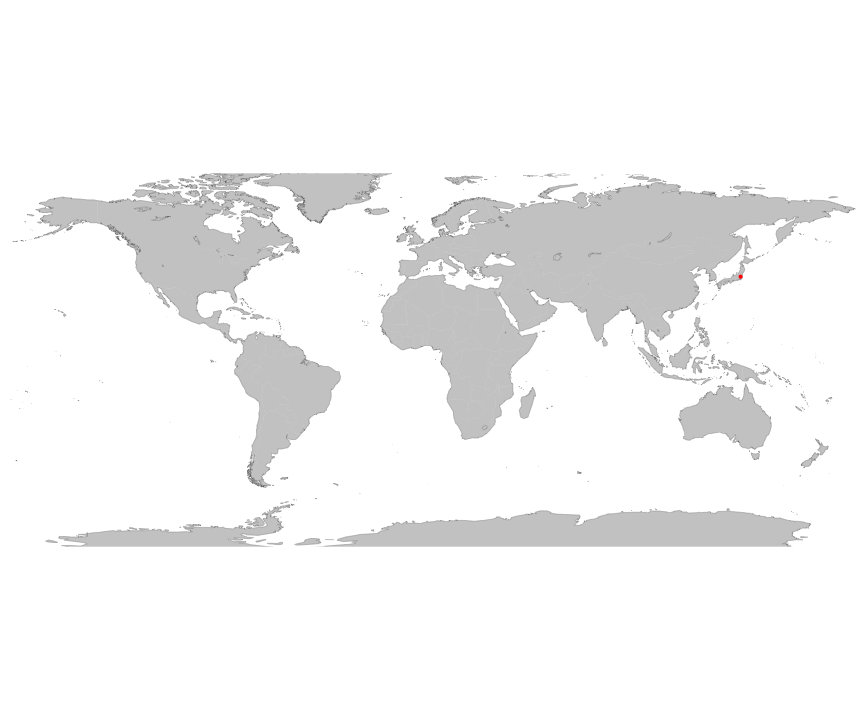
And locally within the country:

The sites sampled are:
| Location | Longitude | Latitude | Vegetation |
|---|---|---|---|
| Japan-Masuko town-P-A sparse stand | 140.11 | 36.45 | Temperate forest |
| Japan-Masuko town-P-B 1000 trees/ha stand | 140.11 | 36.45 | Temperate forest |
| Japan-Masuko town-P-C control stand | 140.11 | 36.45 | Temperate forest |
The growing conditions of sampled plants was:
| Location | growingCondition |
|---|---|
| Japan-Masuko town-P-A sparse stand | plantation managed, field wild |
| Japan-Masuko town-P-B 1000 trees/ha stand | plantation managed, field wild |
| Japan-Masuko town-P-C control stand | plantation managed, field wild |
| Species | Family | Pft |
|---|---|---|
| Pinus densiflora | Pinaceae | evergreen gymnosperm |
Sampling strategy: Study was conducted in a naturally regenerated secondary Pine forest (Block I in the Takadateyama National Forest, compartment 91-Ne, Na, and Tsu, 200 m a.s.l.). For Block III see Tadaki 1979. Three plots with size of 0.01 ha (10 m times 10 m) were set in the stand in 1951 (Ando et al. 1962). These plots were facing the south. The stand was treated to regenerate naturally during 1942 to 1947 and was estimated to be 8 years old in 1951. Plots were treated with different treatments in 1951-1952. Plot A (sparse) was thinned to avoid strong competition. Plot B (1000 trees/ha) was thinned to a density of 10,000 trees/ha in 1952. Plot C (control) was untreated. A total of 70 trees were cut down (20 from plot A, 20 from plot B, and 30 from plot C). Trees were selected randomly. Stems of sample trees were then treated with the stratified clip technique by cutting them into parts contained in horizontal layers of 0.0-0.2 m, 0.2-0.7m, and at interval of 0.5 m upward. Leaves and branches were separated.
Height: Metadata not available.
Biomass: Measured fresh mass of stem, branch, and leaves was converted to dry mass from the ratio of dry to fresh weights (Ando et al. 1962). The ratio was estimated from subsamples dried at 80 degrees C.
Other variables: M.I. Ishihara, H. Utsugi, H. Tanouchi, and T. Hiura conducted formal search of reference databases and digitized raw data from Ando et al. (1962). Based on this reference, meta data was also created by M. Ishihara. Species name and family names were converted by M.I. Ishihara according to the following references: Satake Y, Hara H (1989a) Wild flower of Japan Woody plants I (in Japanese). Heibonsha, Tokyo; Satake Y, Hara H (1989b) Wild flower of Japan Woody plants II (in Japanese). Heibonsha, Tokyo.
This is how the study Ando1962 fits in the entire dataset (grey). each colour represents a species. A legend of species names with colours is included at the end for reports with 1 < n < 20 species.





